Tuesday Training: Why You Should Do Total Body Workouts and a Total Body Workout to Build Strength and Blast Fat
If you’ve been following my Tuesday Training posts and workouts, you’ve probably realized that I am a huge fan of total body workouts where I use various compound exercises.
Compound exercises simply mean that we are working multiple muscles at one time versus doing isolation exercises where we work only one muscle at a time. An example of compound exercises are squats. Squats work every single muscle in our lower body, but they also engage our core and upper body as well. An example of an isolation exercise is a seated leg extension. During a seated leg extension, we are only working your quadriceps.
While I think there is a time and place for isolation exercises (correcting muscle imbalances, increasing the size of a specific muscle, rehabilitation for muscle specific injuries), a training program with the majority of the exercises made up of compound exercises is preferred and recommended for greater strength building gains and greater results.
That’s why I’m surprised when I see so many people at gyms and in general still working muscles individually. For most people, this is not the ideal or most effective way to train, build strength and reduce fat.
5 reasons why you should be doing total body workouts with compound exercises:
-
Burn more calories during a workout. When we work multiple muscles, we recruit more muscle fibers being used. That equals more calories burned. Even though I don’t count calories and don’t generally recommend calorie counting (instead ditch the processed foods and opt for eating real whole foods), we all know that more calories burned means greater fat loss.
-
Get stronger. Strength training is just like any other skill. The more you practice, the better you will get. (This does NOT mean you should strength train everyday. Rest and recovery are extremely important and the other half of the equation to muscle building) Let’s say we want to build strength in our legs. Check out these 2 scenarios: We have a specific “leg day” and work our legs one day a week or we do total body workouts with compound exercises that work a bunch of muscles including our legs 3 days a week. Which one do you think builds more strength? The answer is the latter scenario where we work on our leg muscles 3 days a week. When we are able to work multiple muscles a few days a week, our body and our nervous system gets efficient at it and the result is we get stronger. Also, when we use compound movements we are able to lift more than isolated movements. The end result is that we’re able to build more strength with compound exercises.
-
Get cardiovascular benefits. The more muscles we can use during an exercise, the more our heart rate goes up. Kettlebell swings are a great example because they work all the major muscles in the body. Do a few minutes of heavy kettlebell swings and you’ll soon be gasping for breath, your heart will be pounding and you’ll feel like you ran a bunch of sprints. Compound exercises work more than one muscle group so our heart rate will increase so we will be getting great cardio benefits and at the same time we’ll be getting strong.
-
Simulates real life activities. In the real world we use multiple muscles to do pretty much everything from lifting groceries out of our car to playing a game of beach volleyball to carrying a child up the stairs. Our body and muscles work together as one unit. When we do compound exercises, we work our major muscle groups in a coordinated manor just like we would in real life. This allows for use to perform better at real world movements and activities.
-
Reduces the risk of injuries during real life activities. This goes along the same lines as #4, but because we are working and practicing “real life” muscle movements, we have a greater chance of not getting injured. Compound exercises test our balance, coordination, stability and reaction time. Like I said in #2, the more we practice something, the better we get. If we are consistently practicing and testing those things, the more likely it is that we will be able to catch ourselves if we encounter an unstable surface or that we’ll be able to quickly jump out of the way if something is coming toward us.
This weeks workout is a total body workout favorite of mine. It will really test our stability, balance, coordination and will blast fat and get us strong . We’re going to do it in a circuit with no rest in between exercises so we can get an even greater cardiovascular workout, too.
As with all my workouts, take additional rests if necessary and always pick a weight that will be challenging to you to reap the benefits. It’s the perfect amount of weight when you start to struggle on the last 2 reps. I always give easier modifications, but if you need me to further modify or explain anything, please leave a comment down below. Also, remember to take a few minutes to warm up (jog/march in place, jumping jacks, arm swings, etc.) and remember to stretch your muscles after the workout.
Total Body Workout to Build Strength and Blast Fat
10 step up and press
10 pushup to row
10 lunge with rotation
20 swings
10 chest press with crunch
10 swimmers
20 oblique twists
5 walkout plank
Rest for 60 seconds
Repeat 2X
Extra credit “finisher” for maximum fat blasting: do one of my tabatas (quick 4 minute workout that will get your heart pounding)
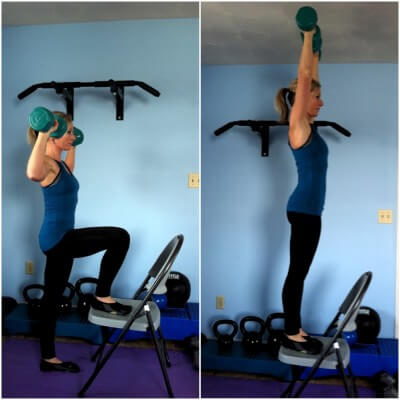
Find a step or sturdy bench or chair. The higher the step, the more difficult the exercise. Hold the weights with your elbows bent, as shown. Place your right foot on the bench. Press the weights over your head while bringing your left foot onto the step. Step back down with your right foot as you lower your weights back to the starting position. Repeat with the left foot and keep alternating legs.
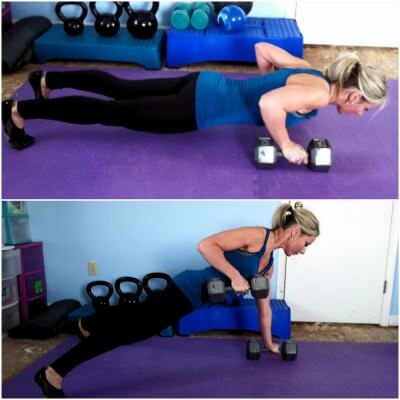
Assume a pushup position with your arms straight and your feet wider than shoulder width apart and your hands on a pair of dumbbells directly below your shoulders. Lower your body to the floor as shown in the first picture. Pause then push yourself back up. Now lift your right elbow toward the ceiling until your elbow passes your torso. Lower the weight back down, do another pushup, then row the left dumbbell. Do not rotate your torso as you row. Modified version: get on your knees so you are in a modified pushup position and do the exercise on your knees.
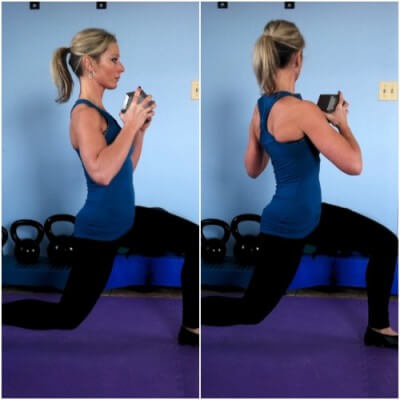
Grab a dumbbell by the ends and step forward into a lunge position. Twist from your waist as far as you can go towards that forward knee. Come back up and repeat with the other leg. Remember to keep your hips forward as you twist.
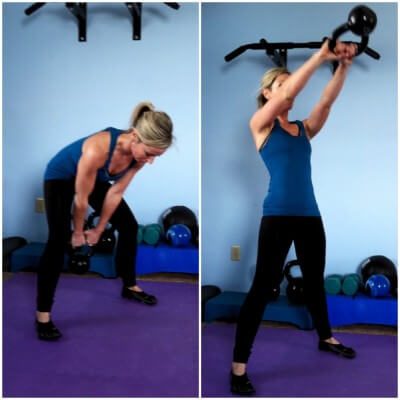
Grab a kettlebell or dumbbell and stand with your feet wide. Squat down and swing the kettlebell down in between your legs. Immediately stand up and swing the kettlebell to shoulder height. Swing back down in between your legs.
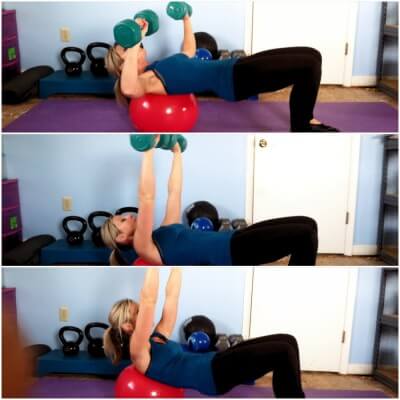
For best results and to really work on your stability and balance, use a stability ball. If you do not have one, you can also use a bench or the floor.
Grab a pair of dumbbells and lie on your back on a stability ball. Raise your hips so your body forms a straight line from your knees to your shoulders. Your upper and middle back should be placed firmly on the ball. Bend your elbows so they are in line with your shoulders and hold the weights. Press the weights up to the sky as you straighten your arms. While the weights are still in the air, lift your shoulders blades off the ball and crunch your abs. Pause then lower back down to the starting position.
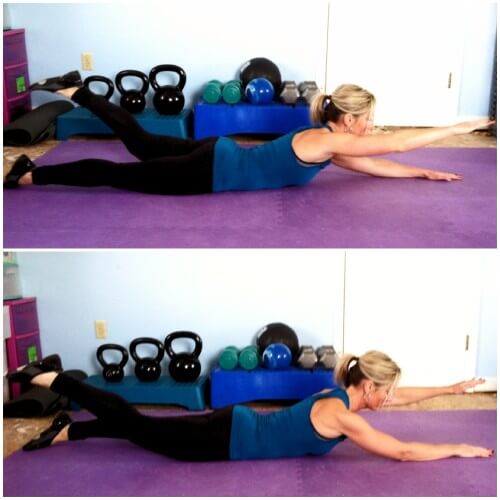
Lie on your stomach and stretch your legs and arms out. Lift one arm and opposite leg. Slowly lower them and repeat using the opposite arm and leg.
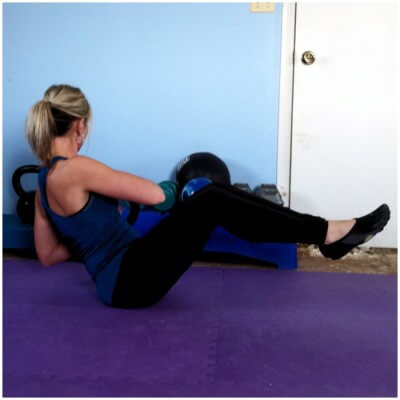
Sit with your knees bent and hold a dumbbell by the ends in front of your chest, elbows pointed out. Lift your feet off the floor and lean back into a 45 degree angle. Try not to round your back. Rotate to the right as far as you can go. Then rotate as far as you can go to the left. Keep your feet elevated. If this is too hard, lower your feet to the floor.
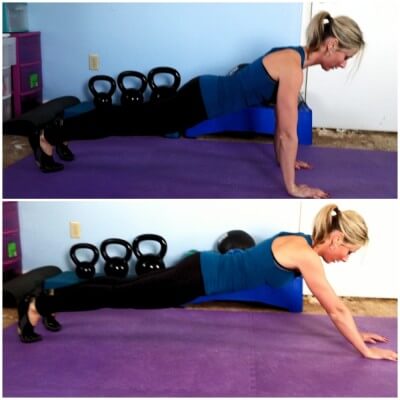
Get in a pushup position. You should form a straight line from your ankles to your head. Slowly walk your hands out in front of your head until your back begins to collapse or your hips start to sag. Walk your feet forward so your body is back into the starting position.
 Primally Inspired Real food, Natural Remedies, Holistic Living
Primally Inspired Real food, Natural Remedies, Holistic Living






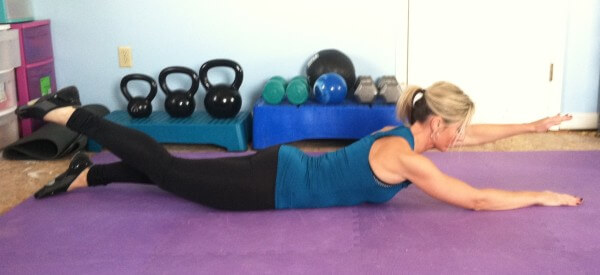

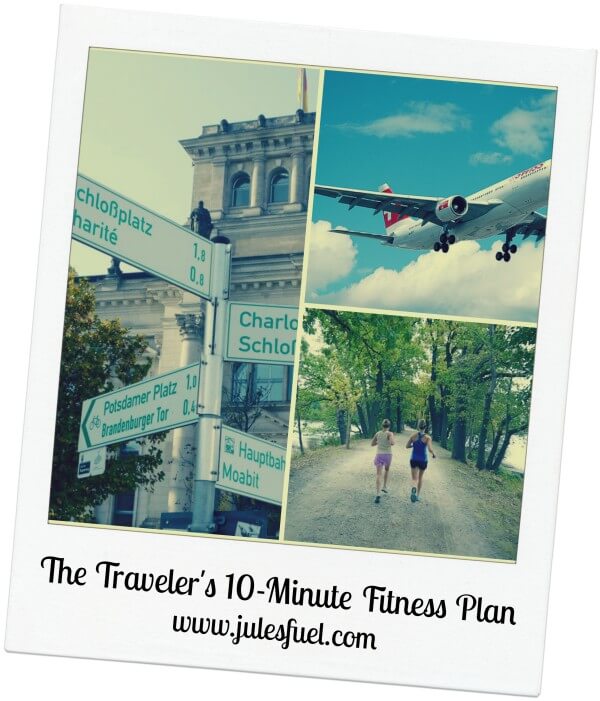
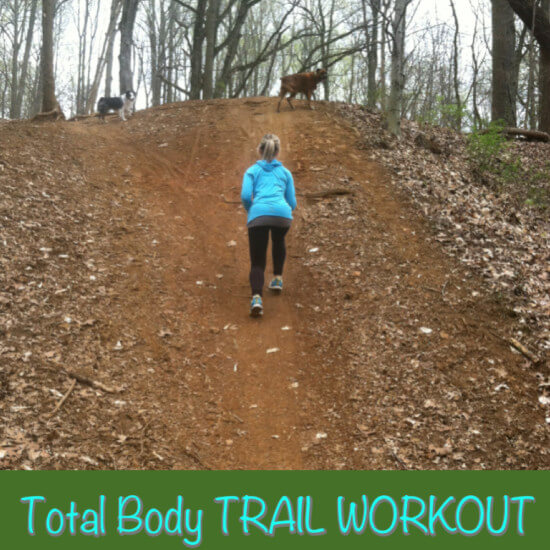
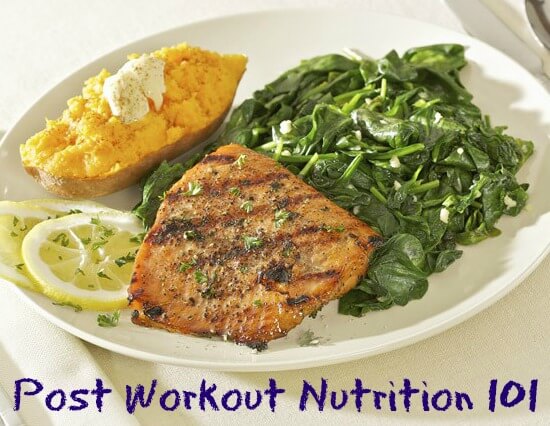
Did the workout yesterday and love it! One quick question, when you say for example, 10 step up & press, it is 10/side or 10 total? Thanks!
Thanks Wendy! And 10 total! I knew I should have specified that – I’m going to go back and write that in. If you did 10 per side, you go girl 🙂
Hello! I am very impressed by your blog, not only have you provided excellent
Recipes and great excercise routines but also have turned me on to my new
Favorite makeup company! Thane you for all your hard work! I do have one (of many,
But this one will do for now;) question, and it may be a bit of a silly one, but, what are the weight
Ranges of your personal set of kettlebells?
Thank you so much again, look forward to hearing from you!
Very best,
Kendall
Hi Kendall! So excited to have you as a reader!! I love questions so nothing is ever silly 🙂
The kettlebells I personally use are 8kg (18 lbs), 16kg (35 lbs), and 28kg (62 lbs). I use the 8kg (18 lbs) one the most – During spring, summer and fall months, I pack it up with me in the car and take it to the park for a quick workout. For me, that’s been a great versatile weight to do single arm and leg exercises and definitely gets the job done!
This is great! I just did one round, all I have time for because my alarm didn’t go off, but my heart is pumping, and I’ll feel my muscles ache a bit tomorrow! Thanks for the great “two in one” moves with the addition of the weights.
Thank you so much for this, Kelly! I love compound exercises because I often don’t have a lot of time to devote to working out (30-45 minutes a day TOPS!) and compound exercises get the job done! 🙂 Could you suggest a workout rotation using compound exercises? Say: If a did a routine using a combination of isolation/compound exercises on Monday, and Friday would that be enough? I also want to work in my pilates and yoga and some cardio in there…although I get quite a cardio workout even with the total body compound exercises. I guess I’m wondering how much rest I would need in between a total body workout. Could I do something like this?
M: Total Body Compound/Isolation
T: yoga
W: Pilates/barre (total body?)
Th: Cardio (HIIT or Kickboxing which I LOVE)
F: Total Body Compound/Isolation
S: My day to run errands, etc.
S: something outdoors or perhaps another yoga session
Would this be sufficient or would I need a day of more of a “gym style” moves with heavier weights or even another day of compound exercises?
Thanks for your help and advice! I LOVE your blog!!! 🙂
Amy